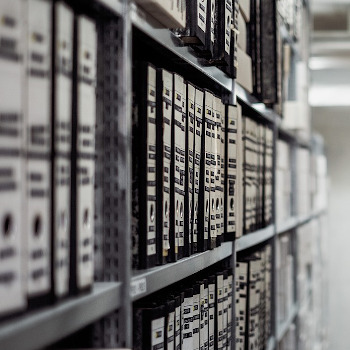
The archive is an important component in the data strategy and makes a decisive contribution to the long-term and compliant storage of data.
Companies should archive their data for a variety of reasons. Companies today rely on agile and intelligent use of data. But data that is not required in daily business or that must be stored securely and unchangeably for legal reasons belongs in an archive. And since an archive that can be managed well in the long term and is legally compliant must meet certain basic requirements, a simple file share is not enough.
Why archive?
There are various reasons why companies should or must archive their data. One of the most important reasons is the applicable retention requirements. In addition to the classic periods, for example ten years for accounting data, there are other regulations and obligations that require the data to be stored for even longer periods and additional security for the content. This includes medical facilities. The patient data must not only be archived long-term – up to 30 years – but also audit-proof.
But the archive is also a requirement in other economic sectors. For example, a vehicle manufacturer must retain design data for a long time in order to have it available in the event of an accident or potential recall. Another reason for an archive can be the large amount of data. For companies and organizations, it may make economic sense not to store large amounts of data on comparatively expensive online storage (or on cloud instances) in the medium or long term. Here too, the archive can be a suitable solution.
Three crucial criteria for an archive solution
Depending on the requirements, different demands are placed on an archive solution. However, three of them are particularly important: the long-term availability of the data through hardware-independent archive technology, audit security, which requires that the archived data cannot be changed, and the destruction of old data (obligation to delete).
1. Long-termism
Retaining data for 10-30 years can be a challenge for companies. Rapid technological progress is quickly making classic storage technologies obsolete. The archive technology must therefore not be dependent on the hardware and its further development. It is important to avoid the so-called Verdor lockin, in which the archive data depends on only a single hardware manufacturer.
If, for example, this hardware manufacturer disappears from the market, it could result in archive data having to be migrated to other systems in a time-consuming and costly manner - otherwise the archive data could no longer be readable or usable in the long term. Archive software that is independent of the hardware brings decisive advantages. With a pure software solution, such as FileLock from GRAU DATA, the data is archived on any disk storage in an audit-proof manner and administrators can replace or modernize their hardware platforms completely independently.
2. Audit security
The second crucial requirement is audit security, for example to comply with guidelines such as GoBD, SEC, BAO, GeBÜV of the FDA and parts of the GDPR. This requires an archive to ensure that the information can no longer be changed after archiving. This can be ideally achieved using a special WORM (Write Once Read Many) technology. Once the data has been put into the WORM state by the archive software, there is no longer any possibility of changing anything about this data. The FileLock WORM archive software from GRAU DATA meets these requirements. It archives data in an audit-proof manner (certified by KPMG) and is completely independent of the existing hardware or application software.
3. Data destruction
In addition, IT managers must also ensure scheduled data destruction. Depending on the configuration, individual data sets or entire data pools can be irrevocably deleted manually after a set period of time - for example after 1, 3, 10, 15 or 30 years. FileLock only releases the data after the set retention time has been reached. Individual files (single file retention) or entire directories can then be deleted. Because the expiration date is written to the file's last access timestamp, each WORM file has an individual associated retention period. The expiration date is either set by an application or derived from the configured default retention period.
More at GrauData.com
About GRAU DATA
GRAU DATA is a specialist in archiving technologies with a complete software product family that enables flexible and highly scalable archiving of company data. The company has its headquarters in Schwäbisch Gmünd and is represented directly or indirectly with partners in all important European countries as well as in the USA. Numerous renowned companies and public institutions use GRAU DATA’s software solutions.
